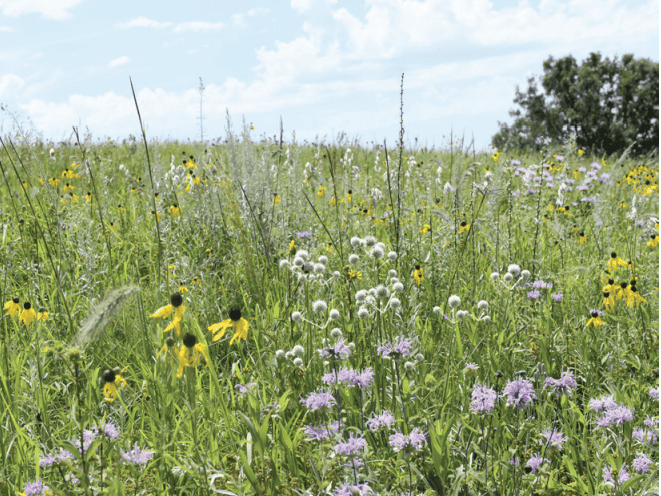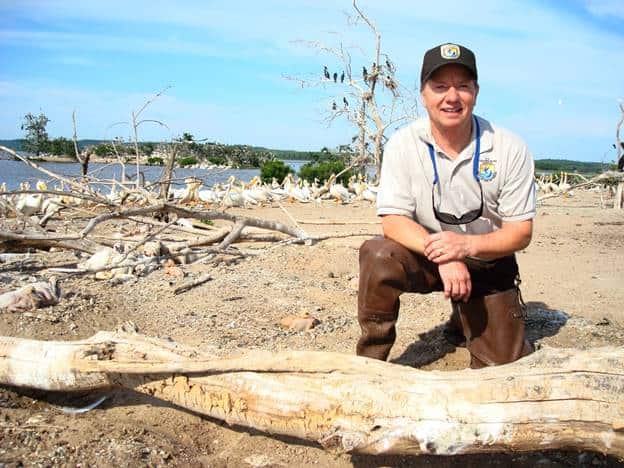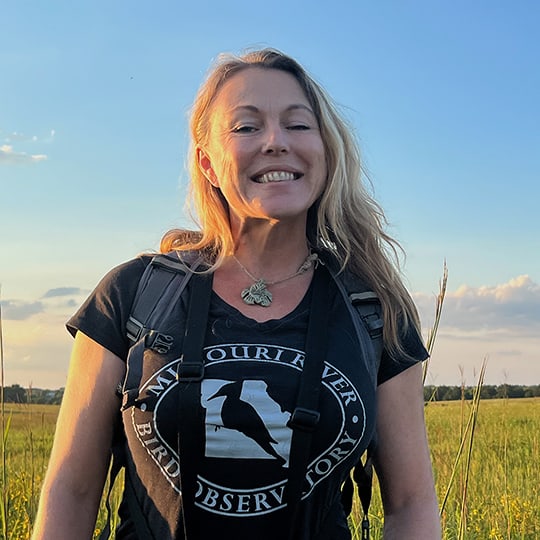
by NIAS | Sep 18, 2024
Cardiphonia – Utterances From the Heart
Presented by Ed Collins, McHenry County Conservation District Director of Land Preservation and Natural Resource Management
Tuesday, October 1st at 7:00pm
St. John United Church of Christ, Freeport, IL
Beyond biological inventories, species indexes, and the precise language of science lies a deeper and more profound truth driving those lives spent in the service of wild places. In a world where communication is increasingly defined by technology and artificial intelligence, the land seeks those who would learn a more ancient form of speech, taught in a language rising from the very bones of the earth itself. We know the truth of that language intuitively, not in the synapses of our minds but in the chambers of our heart. For it is our heart that understands the entire cosmos is scripture each time we marvel at a thunderstorm, gaze into a sea of nighttime stars or feel our breath race as the cranes call overhead on a foggy spring morning. What is spoken by the heart is heard by the heart and rediscovering our hearts in conservation work empowers us to shape our own destiny and that of the future. Ed’s career spans thirty-eight years with the McHenry County Conservation District where he currently serves as the Director of Land Preservation and Natural Resource Management, administering restoration and land preservation efforts on 26,000 acres of open space. During that time, he has been involved in a number of interesting projects including the re-meandering of Nippersink Creek in Glacial Park, the development of the first comprehensive spatial mapping of oak loss in the region and most recently playing an instrumental role in the creation of the Hackmatack National Wildlife Refuge. Ed teaches classes in Forensic Ecology and Ecological Spirituality. His hobbies include collecting drain tile memorabilia, constructing stone labyrinths and working as a trained hypnotist.

by NIAS | Jul 29, 2024
One Hundred Years and Counting, The History of the “Refuge”
Presented by Ed Britton, Wildlife Refuge Manager, Savanna District, Upper Mississippi River National Wildlife and Fish Refuge
Tuesday, September 3rd at 7:00pm
St. John United Church of Christ, Freeport, IL
We hope you come out and listen to Ed Britton’s presentation on the amazing 100-year history of the Upper Mississippi River National Wildlife and Fish Refuge.
Established in 1924 to be a refuge for fish, wildlife and plants and a breeding place for migratory birds, Upper Mississippi River National Wildlife and Fish Refuge now covers more than 240,000 acres and extends roughly 261 miles of the Mississippi River across four states: Minnesota, Wisconsin, Illinois, and Iowa.
More than 290 species of birds migrate throughout the refuge every year. About 40% of the waterfowl in the nation use the Mississippi River as a travel corridor in the fall migration. The Upper Mississippi River National Wildlife and Fish Refuge hosts more than 300 pairs of Bald Eagles, in part due to having one of the largest blocks of floodplain forest habitat in the lower 48 states. The refuge is designated as a Wetland of International Importance by the Ramsar Convention and a Globally Important Bird Area.
Just as the refuge provides a great place for wildlife, it also offers phenomenal opportunities for public recreation. More than 3.7 million visits take place each year as people come to hunt, fish, watch wildlife, take pictures, attend public programs, walk, boat, swim and much more.
Ed has worked 47 years with U.S. Fish and Wildlife Service in the National Wildlife Refuge System. He started his career along the Mid-Atlantic Ocean, have worked throughout the United States, including the Bering Sea in Alaska. Currently, he has been at Upper Mississippi River National Wildlife and Fish Refuge for 29 years as the Savanna District Manager. His office covers 80 miles of river from Dubuque down to the Quad Cities and contains 64,000 acres in IL, IA and WI.

by NIAS | Jan 22, 2024
The Increasing Impact of Plastic on Birds and All Species
Presented by Dana Ripper
Zoom (from home) or in-person
at St. John United Church of Christ
Tuesday, February 6
Program 7:00 pm
HYBRID PROGRAM: All members of Northwest Illinois Audubon Society (that we have emails for), will receive the zoom link the week before the program. If you are not a member, we want you to join us for this great program, but you need to email nwilaudubon@gmail.com to receive your Zoom link.
Ecologists, ornithologists, and bird lovers around the world are sounding the alarm on the plastic crisis. Plastic, much of it single use, is being manufactured by the millions of tons and we’ve reached a point where birds and other wildlife are living in our waste. Moreover, recent research clearly shows the components of plastic – from extraction to eventual degradation – are toxic to wildlife and people.
Join us for an in-depth discussion of our planet’s plastic crisis. We’ll talk about the various points in plastic production and waste management where change can be made and how you can become involved in that change.
Dana Ripper, Executive Director and Co-founder, Missouri River Bird Observatory is a wildlife ecologist who focuses on conservation via ecosystem health. She has an MS in ecology from Arkansas State University (2002) and worked on wildlife research projects across the U.S. before making Missouri home in 2008. In 2010, Dana co-founded the Missouri River Bird Observatory (MRBO), a nonprofit organization dedicated to conservation via science, education, and advocacy. MRBO is an affiliate member of Beyond Plastics and Dana is a certified presenter with the Beyond Plastics Speakers Bureau.



